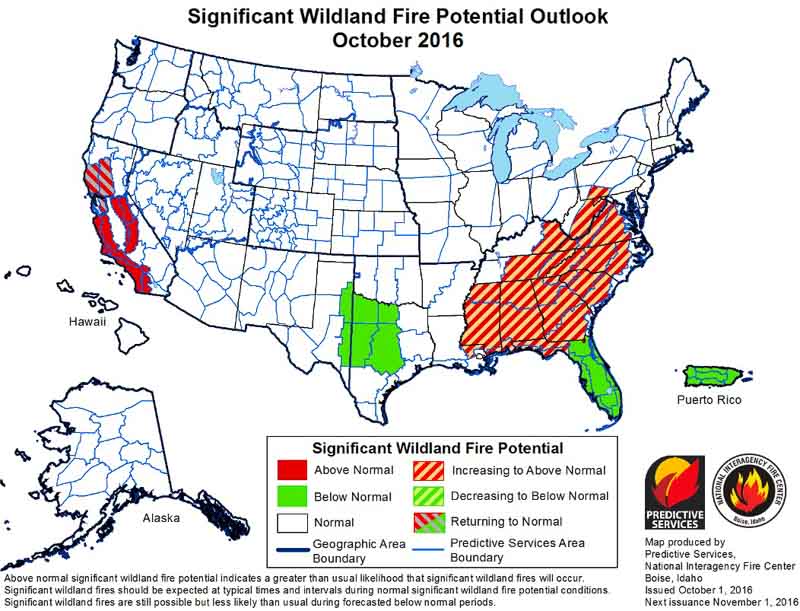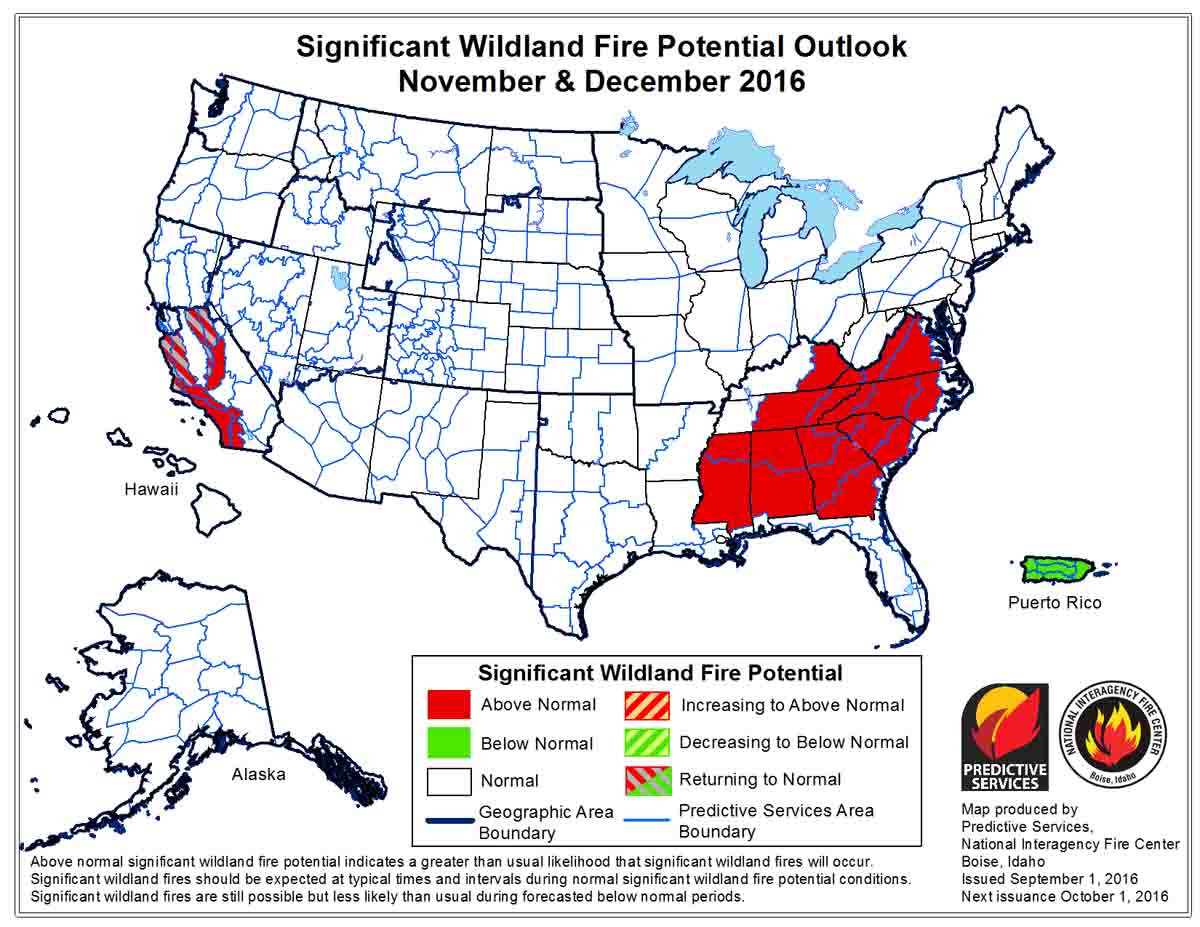With huge amounts of rain and snow hammering California and Oregon, few people in those areas are thinking about wildfires this week.
But in spite of the rain delivered to the west coast on what meteorologists are calling an “atmospheric river”, on January 1 the Predictive Services section at the National Interagency Fire Center issued their Wildland Fire Potential Outlook for January through April. The data represents the cumulative forecasts of the ten Geographic Area Predictive Services Units and the National Predictive Services Unit. If their predictions are correct, in February wildfire activity could begin to pick up in parts of Texas, Oklahoma, Kansas, and New Mexico, with Florida and Georgia getting busier in March and April.
Below are the highlights of their report. Following that are outlooks for February through April, temperature and precipitation forecasts, and the Drought Monitor.
****
“To begin 2017 significant wildland fire potential will be normal throughout entirety of the United States, except for below normal in Puerto Rico. For the majority of the U.S. this normal condition means that significant wildland fires are unlikely and normal indicates an out of fire season condition.
Beginning in February the seasonal increase in wildland fire activity will begin in the southern plains where the combination of abundant fine fuels and the potential for dry and windy conditions will occasional come together to produce periods of significant fire activity impacting the Southwest, Rocky Mountain and Southern Areas.
After February predictions for significant fire activity become increasingly difficult. It is likely that the same fire potential will continue across the southern plains, but pregreen up fires will also become increasingly likely in a large portion of the U.S. These fires are difficult to predict and rely on short term localized significant weather events.
Also during this period it is likely that we will see the onset of fire activity in south central Alaska, where warmer and drier than typical winter conditions are occurring.
Significant fire potential will also increase to above normal in Florida and portions of Georgia. Long term drought remains the primary concern in this area and moisture deficits in this area are likely to lead to occasional fires that burn deep into the soil layer and are more difficult to suppress.”
****
Continue reading “Wildfire potential, January through April”











